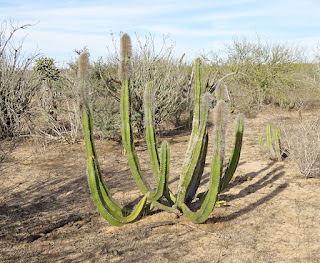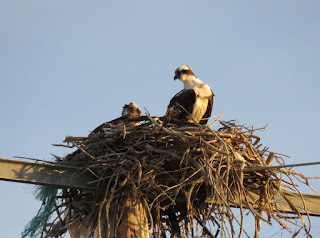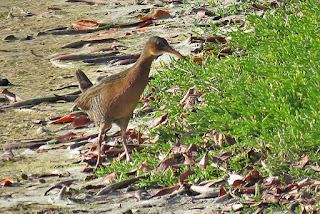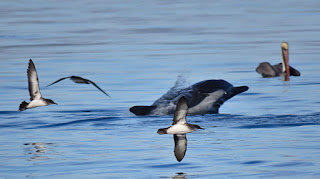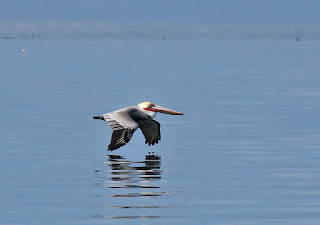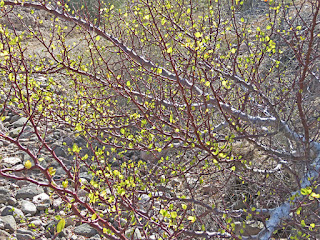There are
just a few photos from the relaxed, final few hours of morning birding on my
WINGS tour to the Cape Region of Baja California. The tour officially ended
around noon with our arrival at the San José del Cabo airport.
We actually had
one outing after our late afternoon arrival the day before, after the long
drive from Puerto San Carlos. With memories of the whales still fresh on our
minds, we walked down to the beach to watch the release of hatchling Green Sea
Turtles by a team of volunteers who collect the eggs and incubate them safely
from the many predators and people who use the beach. They eventually released
somewhere around 60 hatchlings at dusk this evening.
While
waiting for the volunteers to get the last turtles from their nests, we watched
the sun set and noticed a fascinating tail-slapping display of a Humpback
Whale, perhaps a mile out at sea. I was able to get it in the scope, as the animal
“stood” on its head for at least ten minutes, slapping the water aggressively
back and forth with each side of its flukes without pause. This is likely part
of a mating display, perhaps aggressive, but no one really knows.
We stayed at
the Serendipity Bed & Breakfast, a delightful place that everyone opined would
be a nice place to stay for a few days. I agree, and it would be fun to really
scour the region for vagrants, but we had pretty much run out of expected bird
species to add to our list, and that would just make the tour more expensive.
Sigh.
We did add
White-crowned Sparrow (the interior western subspecies oriantha), Brewer’s Sparrow, and California Quail, as well as had more enjoyable
views of Scott’s Oriole, Hooded Orioles, Lark Sparrows, and Costa’s Hummingbirds, among others.
This Hyptis laniflora, Woolly
Desert-Lavender, endemic to Baja California Sur, was the primary food for the
Costa’s Hummingbirds.
This bushy
composite, forming shrubs taller than me, is Bahiopsis tomentosa, Felt-leaved Goldeneye, and is endemic to the
Cape Region.
We saw
several Northern Mockingbirds every day of the tour – the deserts here
apparently offer plenty of food and the right structure.
The
mockingbird is perched on this fascinating shrub, which might be a food source.
It is Stegnosperma halimifolium,
Sonoran Stegnosperma, in the strange and small family Stegnospermataceae.
Although there are specimens of this species from Caborca, Sonora, less than
100 km from the Arizona border, there are no members of this family here.
It was
starting to get warmer, and more butterflies were around. This is the very
widespread Pyrisitia lisa, Little
Yellow.
-->
I saw a few
of these every day of the tour (unlike the dozens in previous years), but
usually only in flight as I was driving. This is the first one we had perch in
front of the group where we could see the lovely colors. It’s the endemic
subspecies Myscelia cyananthe streckeri,
Blackened Bluewing.











